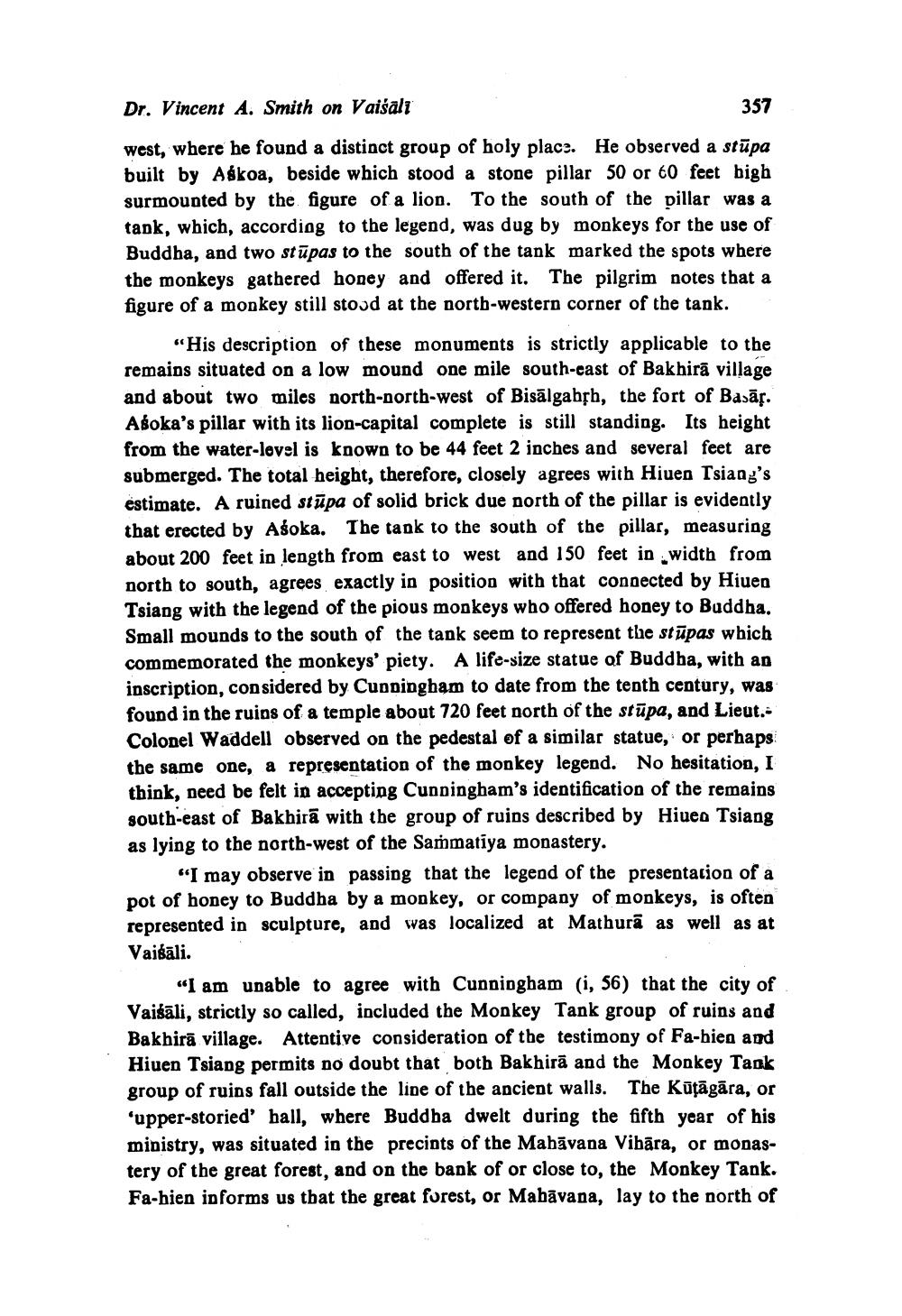________________ Dr. Vincent A. Smith on Vaisali 357 west, where he found a distinct group of holy place. He observed a stupa built by Askoa, beside which stood a stone pillar 50 or 60 feet bigh surmounted by the figure of a lion. To the south of the pillar was a tank, which, according to the legend, was dug by monkeys for the use of Buddha, and two stupas to the south of the tank marked the spots where the monkeys gathered honey and offered it. The pilgrim notes that a figure of a monkey still stood at the north-western corner of the tank. "His description of these monuments is strictly applicable to the remains situated on a low mound one mile south-east of Bakhira village and about two miles north-north-west of Bisalgabsh, the fort of Basas. Asoka's pillar with its lion-capital complete is still standing. Its height from the water-level is known to be 44 feet 2 inches and several feet are submerged. The total height, therefore, closely agrees with Hiuen Tsiaaz's estimate. A ruined stupa of solid brick due north of the pillar is evidently that erected by Asoka. The tank to the south of the pillar, measuring about 200 feet in length from east to west and 150 feet in width from north to south, agrees exactly in position with that connected by Hiuen Tsiang with the legend of the pious monkeys who offered honey to Buddha. Small mounds to the south of the tank seem to represent the stupas which commemorated the monkeys' piety. A life-size statue of Buddha, with an inscription, considered by Cunningham to date from the tenth century, was found in the ruins of a temple about 720 feet north of the stupa, and Lieut. Colonel Waddell observed on the pedestal of a similar statue, or perhaps the same one, a representation of the monkey legend. No hesitation, I think, need be felt in accepting Cunningham's identification of the remains south-east of Bakhira with the group of ruins described by Hiueo Tsiang as lying to the north-west of the Sammatiya monastery. "I may observe in passing that the legend of the presentation of a pot of honey to Buddha by a monkey, or company of monkeys, is often represented in sculpture, and was localized at Mathura as well as at Vaisali. "I am unable to agree with Cunningham (i, 56) that the city of Vaisali, strictly so called, included the Monkey Tank group of ruins and Bakhira village. Attentive consideration of the testimony of Fa-bien and Hiuen Tsiang permits no doubt that both Bakhira and the Monkey Tank group of ruins fall outside the line of the ancient walls. The Kutagara, or "upper-storied' hall, where Buddha dwelt during the fifth year of his ministry, was situated in the precints of the Mabavana Vibara, or monastery of the great forest, and on the bank of or close to, the Monkey Tank. Fa-bien informs us that the great forest, or Mabavana, lay to the north of




